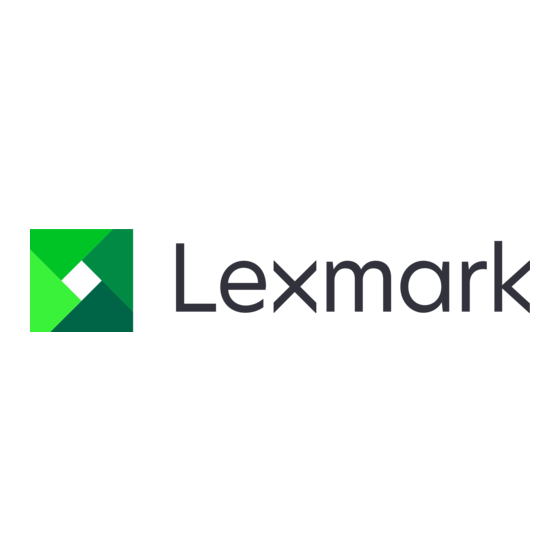Lexmark C782 정보 - 페이지 2
{카테고리_이름} Lexmark C782에 대한 정보을 온라인으로 검색하거나 PDF를 다운로드하세요. Lexmark C782 9 페이지. Hard disk and non-volatile memory guide
Lexmark C782에 대해서도 마찬가지입니다: 매뉴얼 사용 (1 페이지), 문제 해결 매뉴얼 (5 페이지), 설정 시트 (1 페이지)

Overview
Lexmark provides a wide range of printing and imaging devices to help businesses of all
sizes drive greater productivity―from the small business with a handful of employees to
the world's largest enterprises. To meet today's complex printing requirements. Lexmark
equips its devices with non-volatile memory to store essential system information when
the devices are powered off. In addition, some Lexmark devices may also be equipped
with a hard disk. The hard disk is used to buffer jobs, collate large jobs, or store forms,
fonts or macros. To run some print apps or printer software solutions, a hard disk is
required.
The use of non-volatile memory and hard disks are industry-standard methods for
enhancing the performance of print and imaging devices. This document outlines how
these memory types are implemented in Lexmark devices and the mechanisms that can
be utilized to protect data stored on them.
About Non-Volatile Memory Technology on
Lexmark Printers and MFPs
Lexmark devices use two forms of non-volatile memory: EEPROM and NAND. These
components store the device operating system, device settings information, network
information, embedded solution applications, various scanner settings and bookmark
settings. No user related print, copy and/or scan data is stored in non-volatile memory.
To mitigate the risk of your data being compromised, the following actions can be
performed:
•
Information such as device settings can be cleared by restoring the device to its
factory defaults.
•
Embedded solutions can be removed by uninstalling the application using the
device's embedded web server (EWS) under the Embedded Solutions link.
•
Certain network information can be removed from the device by unplugging the
device's network cable and performing an NVRAM reset on the device's network
card; information can also simply be deleted through the EWS.
•
Fax data settings can be cleared from the device by formatting the fax data
partition under the device's Configuration Menu.
•
Other information, such as operating system information, cannot be removed
from the device.
Crushing or shredding the device controller provides the greatest assurance that
sensitive or confidential data does not fall into the wrong hands.
Lexmark International, Inc.
2
